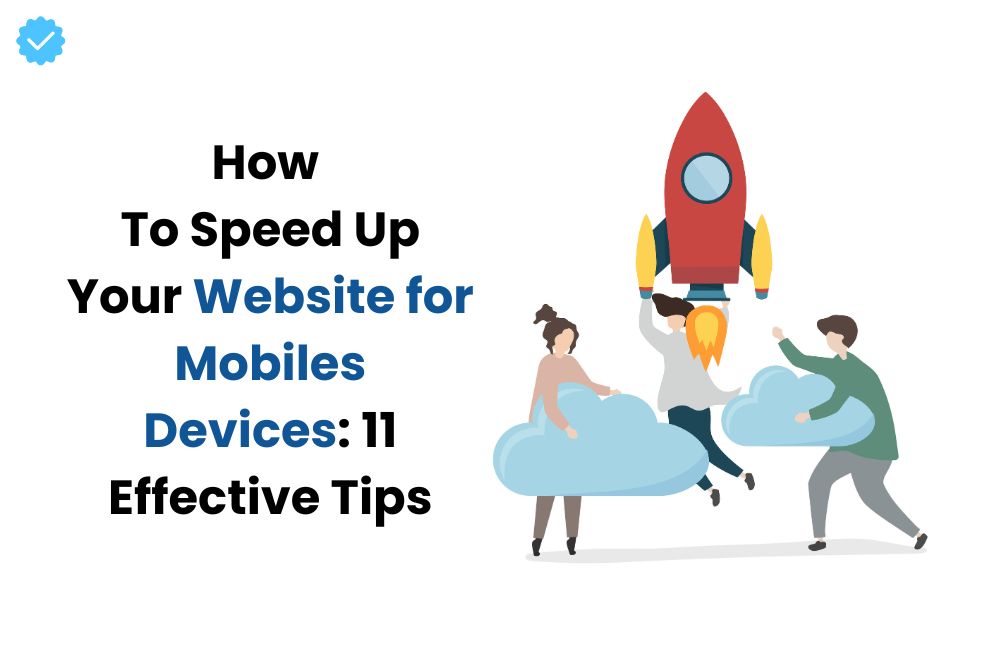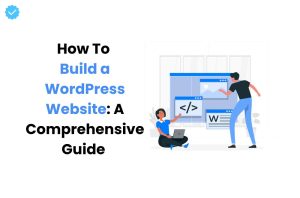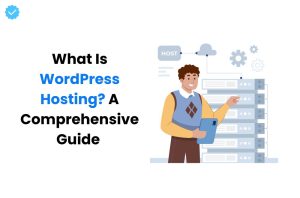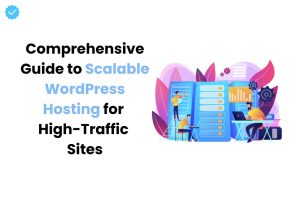You might have encountered people optimizing their websites in many different ways, but have you paid attention to your mobile visitors?
Around 60.08% of the total population surfs the Internet on mobile phones, and the future anticipates only more growth. Thus, one needs to optimize their website to be easily accessible to people over the phone.
Beyond a single responsive theme, there is little that website owners can do to optimize their websites. To keep your visitors engaged, you must make your website fast, easy to use, and specifically designed for small screens.
Even if nobody is buying your products or using your services over the phone, chances are they might do competitive research. This is where you might miss out on golden opportunities.
With this blog, we will ensure you take advantage of all opportunities and speed up your website for mobiles easily. So, let’s begin.
What is Mobile Optimization?
It is a process that helps enhance the website’s overall performance on mobile devices. The sole purpose of using this process is to make the loading time faster, the website more responsive, and easier to navigate. This will further improve the website’s ranking on the SERPs.
What is WordPress Mobile Optimization?
Regarding WordPress mobile site optimization, several steps are taken to improve your website’s usability and performance. The most popular approaches to making one’s website compatible include minifying Javascript and CSS files, optimizing images, and simplifying navigation. By making sure to optimize your WordPress website, businesses can maximize their user engagement to manifolds.
What is the Need to Optimize WordPress for Mobile?
The visible rise in overall internet usage is something that is not concealed. However, when it comes to which devices have been the most popular for using the Internet, mobile phones are considered the top choice. Therefore, optimizing one’s WordPress website for mobile is crucial.
Common Reasons Why Your Mobile’s Performance is Slow
Plenty of factors can impact your WordPress site’s mobile performance. Here are some of them:
No caching on mobile:
In order to speed up your subsequent visits to websites, the device stores certain files. The process is called caching, and these files are called caches. In the event that you have enhanced your site with modules, you can improve the overall load times.
Overloading Plugin:
Although plugins play a crucial role in adding functionality to your website, too many can bring down your site. Only use essential plugins and keep track of their effect on your website.
Unoptimized Images:
Your website can look better with images and animations, but they can also slow down mobile devices. Therefore, for faster loading speeds, ensure that animations and images are compressed.
Unnecessary Scripts:
CSS and JavaScript files slow down your site, especially if they are not essential. Minimize the use of scripts and styles that are not needed for your mobile site. Tools like Autoptimize can help you defer or async the loading of JavaScript and CSS files to improve performance.
Too Many Redirects:
Having multiple redirects can add extra HTTP requests and delay the loading time of your website. Audit your site for unnecessary redirects and streamline your URL structures to ensure a smoother user experience.
Large Page Size:
A page with too much content or too many elements can take longer to load. Thus, increasing the need for optimizing WordPress for mobile. Keep your page size small by removing unnecessary elements and using content efficiently.
How To Optimize Your WordPress Website for Mobile Devices: Proven Strategies
Here we have clubbed in 11 best ways to optimize your WordPress website:
Enable Mobile Caching
Mobile caching is essential for speeding up your website on mobile devices. You can speed upload times by reducing the number of queries made to your server by caching a version of your website in the user’s browser cache. You may set up mobile caching with plugins such as W3 Total Cache and WP Super Cache.
These plugins produce static HTML files of your pages, which are then served to users, reducing load times and server load. Configure the settings specifically for mobile optimization WordPress to get the most out of this feature.
Implement Lazy Loading on Your Images
Lazy loading is a technique that defers the loading of images until they are about to appear in the viewport. This can considerably reduce initial page load time and save bandwidth for mobile users.
WordPress 5.5 and later versions have native support for lazy loading, but you can also use plugins like Lazy Load by WP Rocket. To implement lazy loading, add the loading= “lazy” attribute to your image tags or enable it through a plugin. This way, images are only loaded when the user scrolls down, improving performance and user experience.
Have a Fast Hosting Provider 
A faster hosting provider greatly impacts the working of one’s website. If your server is sluggish, it can deplete the effectiveness of the ongoing optimization efforts. Opt for a hosting provider known for fast performance and excellent uptime. Managed WordPress hosting services like WP Provider, SiteGround, and Bluehost are optimized for WordPress and offer features like content delivery networks (CDNs) and server-level caching.
When selecting a hosting provider, take a look at factors such as server location, SSD storage, and scalability to ensure your website remains fast and responsive.
Decrease the Page Weight
Reducing the size of web pages is vital for the mobile optimization of WordPress. Large pages take longer to load and consume more data, frustrating mobile users. To decrease page weight:
- Compress your photos to optimize them without sacrificing quality.
- Use tools like TinyPNG or ShortPixel to reduce image sizes.
- Minify CSS, JavaScript, and HTML files using Autoptimize or WP Rocket plugins.
This process removes unnecessary characters and spaces, making your files smaller and faster to load. Consider limiting heavy plugins and external scripts that can bloat your pages.
Deliver Full Page Cache Through CDN 
A Content Delivery Network (CDN) can dramatically improve your website’s speed and reliability. CDNs distribute your website’s content across a network of servers worldwide, delivering it to users from the closest server to their location. This reduces latency and speeds up upload times, especially for WordPress mobile-friendly users with slower connections.
Services like Cloudflare, KeyCDN, and Amazon CloudFront are popular choices. By caching total pages on a CDN, you can ensure that static and dynamic content is delivered quickly, providing a seamless experience for mobile visitors.
Use a Responsive Theme 
A responsive theme automatically adjusts your website’s layout to fit different screen sizes and positions, ensuring a consistent and easy-to-use experience on mobile devices. When selecting a WordPress theme, ensure it is responsive, and WordPress optimizes for mobile performance.
Themes like Astra, GeneratePress, and OceanWP are known for their speed and responsiveness. Test your theme on diverse devices and screen sizes to ensure it provides a smooth and intuitive experience. Avoid themes with excessive features and heavy scripts that can slow down your site.
Take a Keen Look at Typography
Typography plays a significant role in mobile usability. Small or hard-to-read text can frustrate users and increase bounce rates. Use legible fonts and ensure your text size is large enough to be read comfortably on small screens. Google Fonts is a great resource for web-safe and responsive fonts.
Additionally, pay attention to line spacing and paragraph length to improve readability. To keep everything looking tidy and professional, limit your font selection to no more than two or three families. To improve readability, use conflicting colors for the backdrop and text.
Avoid Pop-Ups 
While pop-ups can efficiently generate leads on desktops, they often hinder user experience on mobile devices. Pop-ups can be interfering and difficult to close on smaller screens, leading to frustration and higher bounce rates. Instead, consider using less intrusive methods like inline forms or slide-ins that don’t obstruct the main content.
If you must use pop-ups, ensure they are mobile-friendly and easy to close. Google penalizes sites with intrusive interstitials, so keeping your WordPress mobile site’s experience seamless is essential for maintaining good SEO.
Implement Google AMP
Google introduced Accelerated Mobile Pages (AMP), an open-source project to expedite the loading of mobile websites. Implementing AMP on your WordPress site can drastically improve load times and overall performance. To enable AMP, use the official AMP plugin for WordPress, which automatically generates AMP versions of your pages. AMP pages are stripped-down versions of your regular pages, optimized for speed. This can improve user engagement and higher rankings in mobile search results.
Touchscreen Optimization
Optimizing your site for touchscreen use is essential for a smooth mobile experience. Ensure that buttons and links are broad enough to be easily tapped and spaced sufficiently apart to prevent accidental clicks. Use touch-friendly gestures like swipe, pinch-to-zoom, and tap for navigation. Also, avoid hover effects, as they don’t translate well to touchscreens. Testing your site on mobile devices can help you fine-tune these elements for better usability.
Test on Multiple Browsers and Devices
Lastly, test your WordPress mobile site across various browsers and devices to ensure your mobile optimization efforts are fruitful. Different browsers and devices can render your site differently, so it’s essential to check how your site performs across various. Use tools like Google’s Mobile-Friendly Test, BrowserStack, or physical devices to recognize and fix any issues. Frequent testing guarantees a consistent and seamless user experience for all users, regardless of their browser or device.
Conclusion
So, this brings an end to our content. One can build a WordPress mobile site with a quality and user-friendly experience using proper strategies and tips. As soon as your visitors witness a smooth and lightning-fast speed, the bounce rate will tend to decrease, thus improving your website’s ranking.
Remember that a website that can reach your mobile users will help you create a loyal customer base and achieve your business goals. So, remember to use the strategies mentioned above diligently.
WP Provider is at your service if you are looking for a robust hosting provider that can handle all your worries related to WordPress optimization. From maintaining your website to ensuring its security, we will take care of everything. Get in touch with us today.
FAQs (Frequently Asked Questions)
Why is my website slow on mobile?
Your website might be slow on mobile due to factors like large image files, unoptimized code, poor server performance, or excessive plugin use. Ensuring mobile-specific optimizations and reducing page weight can help improve speed.
Does website speed matter?
Yes, website speed significantly impacts user experience, search engine rankings, and conversion rates. Website speed increases based on user satisfaction and engagement.
How to increase the mobile speed of a website?
To increase mobile speed, mobile optimization WordPress is required. You can use caching, implement lazy loading, choose a fast-hosting provider, and minimize CSS, JavaScript, etc. Additionally, consider using a CDN to deliver content more efficiently.
How do you check mobile performance scores?
You can check your mobile performance score using tools like Google PageSpeed Insights or GTmetrix, which provide detailed analysis and recommendations for improvement. Simply enter your website URL to get a comprehensive performance report.




